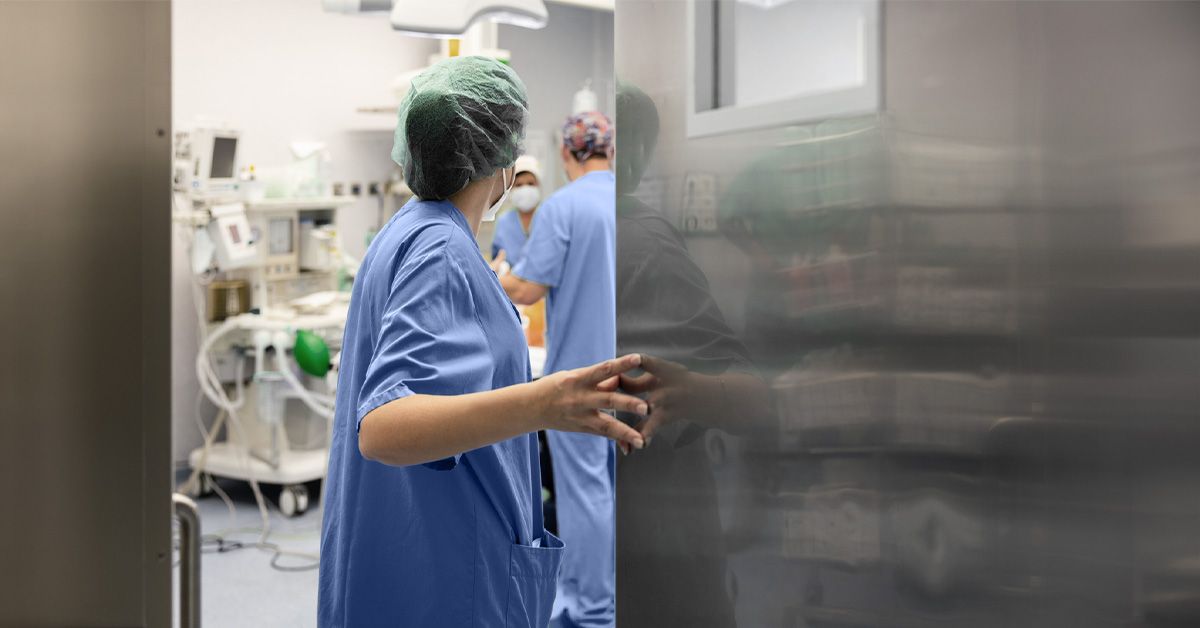We include products we think are useful for our readers. If you
buy through links on this page, we may earn a small commission. Here’s our process.
How we vet brands and products
Medical News Today only shows you brands and products that we stand behind.
Our team thoroughly researches and evaluates the recommendations we make on our site. To establish that the product manufacturers addressed safety and efficacy standards, we:
- Evaluate ingredients and composition: Do they have the potential to cause harm?
- Fact-check all health claims: Do they align with the current body of scientific evidence?
- Assess the brand: Does it operate with integrity and adhere to industry best practices?
We do the research so you can find trusted products for your health and wellness.
- A recent study investigates how well radiofrequency-based ablation treats atrial fibrillation.
- Using real-world data, the researchers found that the procedure performed better than expected.
- The researchers hope that their findings will help further improve the procedure.
RF-based ablation is the most common treatment for atrial fibrillation (AFib) — an irregular and usually fast heartbeat.
Studies have shown that this procedure is safe and effective, but over the years, clinicians have refined RF-based ablation to improve its safety and efficacy.
Despite its widespread use, few studies have investigated how modifications and advances in RF ablation techniques have influenced its performance.
A recent study, which appears in the journal Heart Rhythm, examined RF-ablation success across multiple high-volume sites in the United States. The researchers find that one year after RF-based ablation, 81.6% of patients were free from AFib. Of those patients, 89.7% were able to stop taking drugs to treat the condition.
These rates are higher than those attained in clinical trials, showing that the modifications have indeed improved safety and performance.
AFib is the most common form of arrhythmia — an abnormal heartbeat. In Australia, the United States, and Europe, it affects 1–4% of people and is particularly prevalent in older adults.
Alongside interrupting blood flow, palpitations, breathlessness, and chest pain, AFib increases the risk of other issues.
Medical News Today spoke with Paul Drury, MD, a board certified cardiologist who was not involved in the study:
“Atrial fibrillation, while not considered life-threatening, is a serious health condition that increases a patient’s lifetime risk of stroke and congestive heart failure. It often requires life-long monitoring and treatment.”
Drury is associate medical director of electrophysiology at MemorialCare Saddleback Medical Center in Laguna Hills, CA.
RF-based ablation is a common tool for treating AFib. It uses heat to destroy sections of heart tissue that cause the condition. The technique has been used for many years, most commonly to treat problems with the gastrointestinal tract.
Earlier randomized, controlled clinical trials demonstrated that the first versions of RF-based ablation had good safety profiles and were effective.
However, clinicians have slowly refined procedure techniques over time, so it is not clear how effective these newer techniques perform in the real world. Additionally, few real-world studies have investigated the procedure outside of the early clinical trials.
A recent study helps plug this gap in our understanding. The authors presented their findings recently at the Heart Rhythm 2024 meeting in Boston, MA.
MNT spoke with Paul C. Zei, MD, PhD from Brigham and Women’s Hospital in Boston, MA, one of the new study’s authors.
Zei explained how he and colleagues “felt that if a collection of experienced electrophysiologists in real-world practice could come together and collect data to evaluate detailed procedural practices, including innovations that group members implemented in their standard practices, this would be a way to generate real-world evidence that could improve procedural outcomes.”
Zei and his team analyzed information from a registry called Real-world Experience of Catheter Ablation for the Treatment of Symptomatic Paroxysmal and Persistent Atrial Fibrillation (REAL-AF).
This multi-center registry was co-founded in 2019 by Zei and colleagues. Including 50 medical centers, it is designed to assess the long-term outcomes of patients treated for AFib.
Importantly, these medical centers all carry out AF-based ablation procedures regularly and use new best practice techniques, such as:
- specifically targeting the pulmonary vein — a region where AFib often begins
- minimizing fluoroscopy during the procedure — this reduces radiation exposure
- using shorter, more powerful blasts of radiofrequency to speed up the procedure
The scientists analyzed data from 2,470 AFib patients who had been treated using RF-based ablation to create the REAL-AF registry.
All participants had paroxysmal AFiib, a form of AFib where symptoms come and go over time. The researchers particularly focused on the techniques used and how long the procedure took.
They assessed patient outcomes immediately following the procedure and one year later.
“We studied experienced operators and centers to try to ensure that we were studying the best techniques that are already being used,” Zei explained. “Our motivation is to learn the best approaches for RF-based ablation and adjust and improve those approaches so that our outcomes get even better.”
Data from the REAL-AF registry showed that the RF-based ablation procedures were more efficient, effective, and safer than data from randomized clinical trials suggests. This is quite a surprising finding.
“Generally, real world registries show less efficacy than many randomized trials,” Shephal Doshi, MD, a board certified cardiac electrophysiologist told MNT.
Doshi explained that this is because, “in clinical practice, physicians may not follow the studies protocols or techniques and may get suboptimal results. In this example, this registry had even better outcomes with refinements in procedural techniques with RF-based ablation, something that is not often seen and shows the power of a learning health network.”
Doshi, who was not involved in the study, is director of cardiac electrophysiology and pacing at Providence Saint John’s Health Center in Santa Monica, CA.
One year after the procedures, 81.6% of participants were free from all-atrial arrhythmia, and 85.7% had no atrial arrhythmia.
Importantly, the vast majority — 93.2 percent — had no arrhythmia symptoms in the 12 months following the procedure.
The scientists also found that the average procedure time was significantly shorter. This means that patients need to spend less time under anesthesia, which is safer and frees up clinicians’ time to conduct more procedures.
The authors conclude that refinement of RF-based ablation to treat paroxysmal AFib “resulted in excellent short and long-term clinical outcomes.”
The authors plan to extend their research to investigate other forms of AFib, including persistent AFib, which tends to be harder to treat.
“The goal is to disseminate best practices across every operator and center,” Zei explained.
Zei told MNT that he and his team will continue to collect and analyze data using the REAL-AF registry.
“As this registry became bigger and more data was being collected. We reached a point where we can now utilize this network of physicians as a learning health network, where this data generation, clinical implementation, and outcome improvement can be continually implemented.”
Certain new techniques are also being developed, including so-called pulsed-field ablation, which uses electrical fields rather than heat to destroy heart tissue.
RF-based ablation is still the most common technique today, so continually improving the procedure is important. Also, Zei and his team “plan to evaluate pulsed-field ablation as members gradually adopt these platforms.”
Read the full article here





